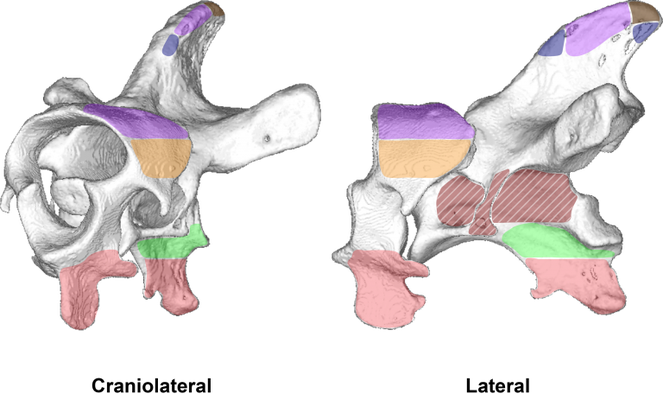
A recently published journal analysed the highly complex neck anatomy of three closely-related vulture species that distinctly differ in feeding strategy – the gulper (Griffon Vulture), ripper (Cinereous Vulture) and scrapper (Hooded vulture).
Different feeding strategies
Vultures are obligate scavengers whose niche behaviour of feeding exclusively on carrion is vital for helping keep ecosystems healthy. However, the competition among sympatric vultures led to ecological differences such as the preference for certain types of food from a carcass.
Via comparative dissections, the study (Böhmer et al. 2020 J Anatomy) analysed the highly complex structure of the head-neck system of three vulture species that exploit the same food resources in different ways. Gulpers such as the Griffon Vulture (Gyps fulvus) feed primarily on the softer viscera. In contrast, rippers such as the Cinereous Vulture (Aegypius monachus) feed primarily on the tough skin and hide of a carcass. Scrappers (or peckers) such as the Hooded Vulture (Necrosyrtes monachus) feed primarily on small scraps on and around the carcass. These differences in feeding strategies have been related to differences in size and shape of their beak, skull and mandible, and are linked to differences in head movements. The study looked into the movements of the head, which are executed around several or even all joints of the cervical vertebral column, and where knowledge of the detailed muscular anatomy of the neck in vultures was lacking.
Insights from the study
Left: Musculoskeletal system of the head and neck in vultures. Summary of the musculature of the Griffon Vulture and the Cinereous Vulture.
Right: Atlas-axis complex. 3D models of the first and second cervical vertebra of the Griffon Vulture. The areas of origin and insertion of the neck muscles are shown in colour.
Source: Böhmer et al. 2020 J Anatomy
The study revealed differences in the number of cervical vertebrae, in the morphology of the atlas−axis complex as well as in the neck musculature despite overall similarities in the musculoskeletal system. Gulpers, rippers, and scrappers adopt specific postures while feeding on a carcass, but the cervical vertebral column is indispensable to position the head during all kinds of behaviour. The great range of demands may explain the conservation of the overall muscle topography of the neck across the studied taxa.
Read the complete study
Gulper, ripper and scrapper: anatomy of the neck in three species of vultures. Böhmer C, Prevoteau J, Duriez O and Abourachid A (2020) Journal of Anatomy. 10.1111/joa.13129.





